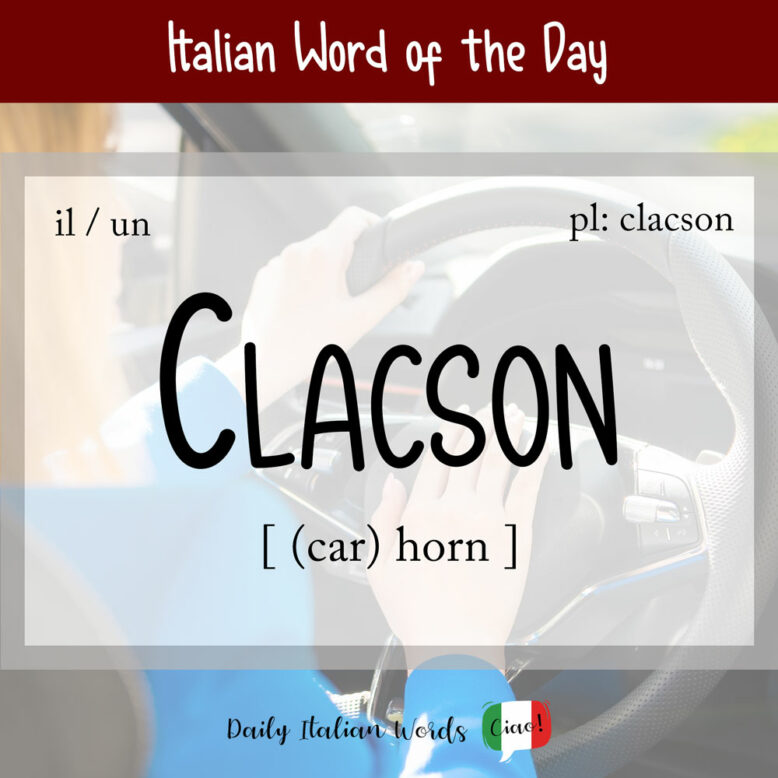Today’s word of the day is clacson, which is the word for horn, or more specifically, car horn in Italian.

Now, you may be thinking to yourself that clacson doesn’t look very Italian, and you’d be right. This is because it comes from the English word klaxon, a type of electromechanical horn or alerting device used in cars, trains and ships that makes the easily identifiable “awooooga” sound when honked.
The English word comes from the brand name Klaxson, which in turn was inspired by the Ancient Greek verb klazo meaning “I shriek“.
Although the klaxon horn has largely been replaced by more modern devices, Italians continue to use the term clacson to talk about modern day car horns.
The word clacson is masculine but because it is an imported term, the ending doesn’t change in the plural form.

To honk in Italian translates as suonare il clacson (suonare = to ring, to play), or dare un colpo di clacson which literally translates as to strike a blow of horn.
Non suonare il clacson senza un buon motivo!
Don’t honk the car horn without a good reason!
Dai un colpo di clacson a quello davanti. Il semaforo è verde e lui non si muove!
Give a honk to the guy in front. The lights are green and he’s not moving!
Italians and the love of the “clacson”!
The sound of the clacson is a distinctive characteristic of daily urban life in Italy. The further south you go, the more drivers make use of it.
Napoli is a very good example of a place where Italians beep all the time for various reasons, and not all of them good! One is to make everybody aware that the traffic light has turned green. The video below made by Fanpage.it shows how quickly drivers honk as soon as the light changes.
Heather Broster is a graduate with honours in linguistics from the University of Western Ontario. She is an aspiring polyglot, proficient in English and Italian, as well as Japanese, Welsh, and French to varying degrees of fluency. Originally from Toronto, Heather has resided in various countries, notably Italy for a period of six years. Her primary focus lies in the fields of language acquisition, education, and bilingual instruction.


